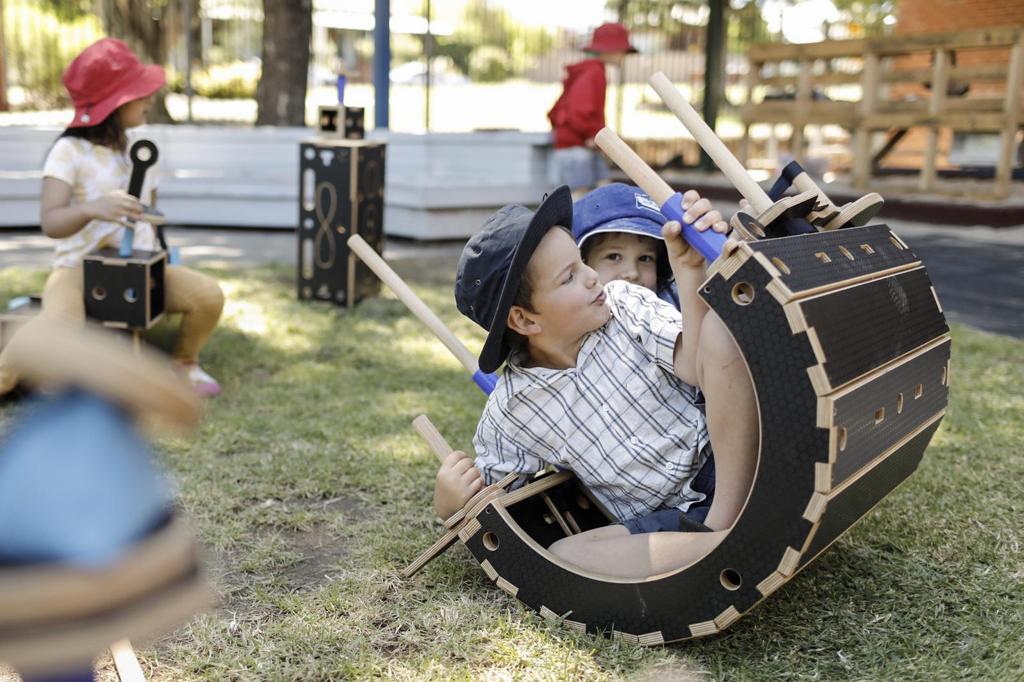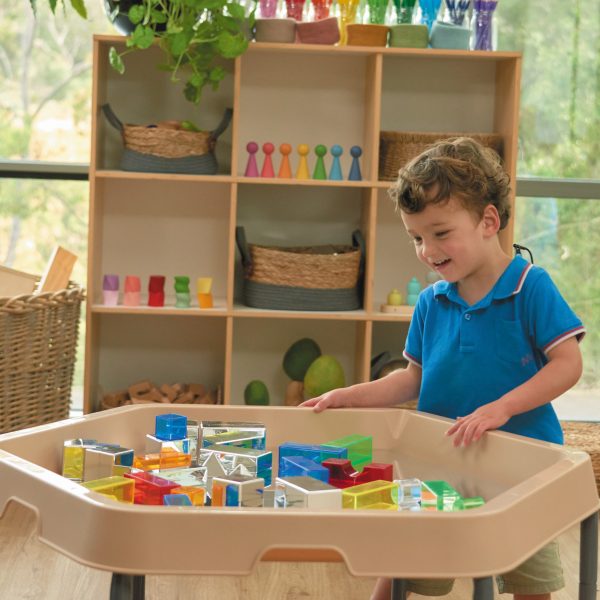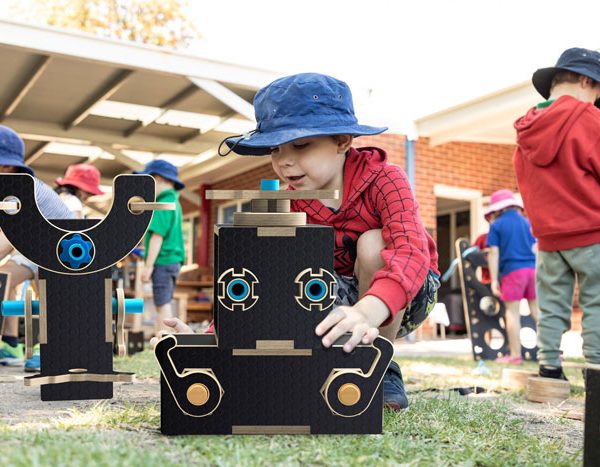The value of loose parts play as a vehicle for children’s imagination

In 1972, architect Simon Nicholson developed the Theory of Loose Parts; the idea that loose parts, materials which can be moved around, designed and redesigned, and tinkered with; create infinitely more opportunities for creative engagement than static materials and environments. Basically, the more materials there are, the more people can interact.
Loose parts make an especially valuable addition to early learning spaces because children can use loose parts to make, build, experiment and invent. Loose parts have the flexibility to be combined, redesigned, pulled apart and put back together, carried around, manipulated, put into patterns or used as visual representations for children’s imaginations.
Loose parts also invite children to explore and discover, imagine and create, enquire and experiment, play and tinker about as they build on their developmental skills in a supportive learning environment, and are supported to engage in open ended play.
We recently spoke with Marcus Veerman, Founder & CEO of Playground Ideas & Nüdel Kart, to learn more about the value of loose parts play, how to store and use loose materials respectfully, and how loose parts can support children’s social and emotional development.
Let children lead
One of the key elements, Mr Veerman began, is to understand that loose parts require educators to be present, without being instructional.
“Allow children to lead the way… they are incredibly creative.” Educators, then, simply need to sit back, support their play, and follow their lead. In terms of how educators themselves may come to see the value and opportunity in loose parts, he recommends accessing this free loose parts play manual which contains a number of ideas and resources.
Loose parts and social and emotional learning
By their very nature, loose parts have “so many different opportunities to do so many different things that it allows a child to have many many different ideas,” Mr Veerman continued, and it is in the process of working through and sharing these ideas with other children, who will have different ideas of their own, that social and emotional learning comes to the fore.
“Loose parts are essentially other tools for social and emotional capabilities because you can’t play with loose parts without developing these skills,” he explained.
Beyond social and emotional learning, provisioning children with curated loose parts builds on what Mr Veerman said were innate qualities.
The value of loose parts in creative learning
“Humans were built to learn through doing, we were not built to learn simply by listening. The pathways to brain development are strongly connected to what we do with our bodies and loose parts engage children in a deep and connected world where they are exploring and experimenting with their environment,” he shared.
“The connections they are making with their hands and bodies reflect that connection. Unlike fixed playgrounds and resources which don’t change, loose parts require construction and reconstruction.”
“Similar to an inkblot test for a psychologist,” he continued “where the viewer creates meaning from the meaningless , completely open-ended loose parts that do not have distinct meaning are an invitation for children to create deep meaning in their play. Because of this uniqueness, loose parts can be a really effective way of helping children to unlock their deep play drivers and use them as a way to explore their deep developmental needs.”
Suggestions for services who are new to loose parts
When asked for his suggestions to support services who may be new to working with loose parts, Mr Veerman suggests that services consider that the ethos is less about what specific parts they may need, and more about how different parts can have different uses, and making those connections in interesting ways.
“The secret to loose parts is diversity,” he explained. That being said, academics in the sector who have worked extensively on the value of loose parts play, including Professor Anita Bundy, have identified that heavy parts which require multiple children to configure them and move them around, such as large boxes, are “really important for social skills and collaboration, so I would include some of those things.”
Storage and presentation of loose parts is also an important part of introducing them thoughtfully into an early learning environment.
“A lot of people don’t consider good quality storage when it comes to loose parts,” Mr Veerman shared. “Investing in a shed with shelves or some sort of storage system like a 40 foot shipping container and then working with children and educators to understand that the parts need to be put away at the end of each session can go a huge way to removing the perception that loose parts are junk.”
Popular

Policy
Practice
Provider
Quality
Research
Workforce
Beyond the headlines: celebrating educators and the power of positive relationships in early learning
2025-07-07 10:00:24
by Fiona Alston

Workforce
Policy
Quality
Practice
Provider
Research
ECEC must change now, our children can’t wait for another inquiry
2025-07-02 07:47:14
by Fiona Alston

Workforce
Quality
Practice
Provider
Research
Beyond the finish line: Championing child protection one marathon at a time
2025-07-08 09:15:32
by Fiona Alston













